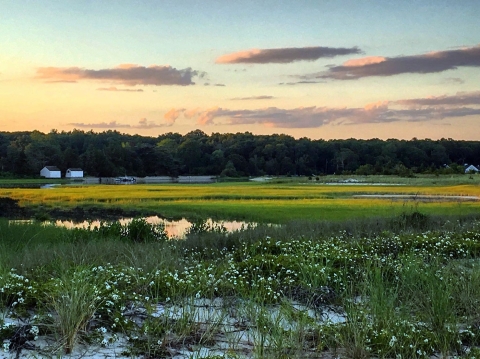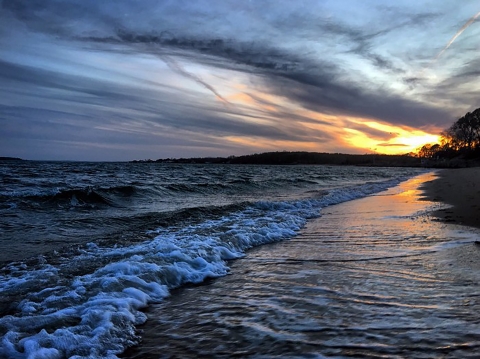When intense storms hammer our coastal communities, damaging both property and livelihood, we recognize the protective buffer provided by intact, healthy, natural habitats. To better protect communities and wildlife, the U.S. Fish and Wildlife Service is working with experts and organizations to evaluate the best habitats to conserve. A landscape-scale assessment is one tool that can help with these evaluations.
Like a report card, the assessment takes into account multiple elements to create a comprehensive score that represents the overall health for a specific area. But instead of homework and test scores, the assessment measures indicators of connectivity, water quality, and other characteristics. The resulting information allows communities to make informed decisions about how and where they manage their lands, whether it is for development, restoration, or protection.
The Service’s Southern New England-New York Bight Coastal Program, in partnership with other experts, completed the first landscape-scale assessment of coastal habitats for the Long Island Sound Estuary. Motivated by concerns that habitat losses may be outpacing conservation efforts, the partnership developed a framework to quantitatively score the health of priority habitats. This framework may be a model for other communities. Communities can also use the framework to link on-the-ground projects to outcomes necessary for the improvement of the Sound’s overall health.
Sustaining the benefits and functions of natural places is important for wildlife and communities that depend on Long Island Sound to live, work, and play. The ability of the Sound to support these uses depends on the health of its forests, rivers, wetlands, eelgrass beds, and embayments. In the future, scientists, managers, and communities can use the Sounds’ report card to monitor changes over time.
“Understanding the historical condition of habitats within the Long Island Sound ecosystem and their relative change over time will help us develop appropriate restoration targets.” — Mark Tedesco, Director of the U.S. Environmental Protection Agency’s Long Island Sound Office
Finding ways to make conservation more effective, particularly in urban coastal areas, is increasingly important as we continue to learn how the well-being of humans, the economy, and nature are connected. Full results of this study, “Advancing Coastal Habitat Resiliency through Landscape-Scale Assessment,” are published in the Journal of Coastal Management in January 2018.









